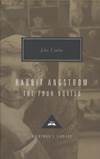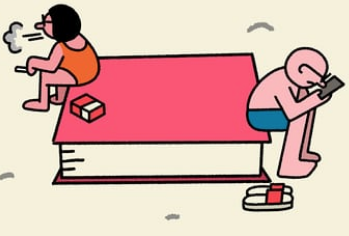Richard Rabicoff commented on The John Updike Society Facebook page that he went to the Gaithersburg (Md.) Barnes & Noble and was shocked to see that, for the first time in his life, there wasn’t a single John Updike book on the shelf. Yet, he says, there were seven Roth novels and also lots of Steinbeck and Vonnegut.
That begs the question, Are people still reading Updike?

Amazon ranks their books in terms of sales, for all the world to see. Not surprisingly, the paperback Rabbit, Run is ranked the highest in terms of sales: ranked #69,140, as of Jan. 26, 2019. But numbers two and three might surprise. Have a look, bearing in mind that these are not the number of copies sold, but the sales ranking, with the lowest selling the most. Not all Updike books are listed—just those that came up in the first pages as the most frequently searched.
Here are the best-selling Updike books at Amazon:
Rabbit, Run (paper)–#69,140
Gertrude and Claudius (paper)–#136,143
A Child’s Calendar (hardcover)–#163,055
Of the Farm (paper)–#227,124
Rabbit at Rest (paper)–#236,366
In the Beauty of the Lilies–#266,664
The Maples Stories (Everyman hardcover)–#315,707
Rabbit Angstrom (Everyman hardcover)–#317,683
The Witches of Eastwick (paper)–#332,639
The Complete Henry Bech (Everyman hardcover)–#333,161
Collected Stories (LOA hardcover)–#334,615
Rabbit Redux (paper)–#359,135
A Month of Sundays (paper)–#383,758
Rabbit Is Rich (paper)–#406,829
Conversations with John Updike (paper)–#455,792
Poorhouse Fair/Rabbit, Run/Centaur/Of the Farm (LOA hardcover)–#465,872
Couples (paper)–#508,942
Still Looking (hardcover)–#599,499
Just Looking (hardcover)–#607,069
Toward the End of Time (paper)—#622,255
Pigeon Feathers (paper)–#630,258
The Early Stories (paper)–#632,537
My Father’s Tears (paper)–#715,674
Hub Fans Bid Kid Adieu (LOA hardcover)–#807,007
Endpoint (hardcover)–#910,608
Olinger Stories (Everyman hardcover)–#969,496
Terrorist (paper)–#971,637
The Widows of Eastwick (paper)–#1,037,139
Licks of Love (paper)–#1,075,513
Updike (Begley bio, paper)–#1,316,562
Selected Poems (hardcover)–#1,335,412
Collected Poems (paper)–#1,448,111
Brazil (paper)–#1,461,206
Trust Me (paper)–#1,509,122
S. (paper)–#1,612,851
The Poorhouse Fair (paper)–#1,659,739
Marry Me: A Romance (paper)–#1,824,514
More Matter (paper)–#1,943,398
Seek My Face (paper)–#2,137,216
Higher Gossip (paper)–#2,526,515
Picked-Up Pieces (paper)–#2,631,106
Assorted Prose (paper)–#3,124,858
Too Far to Go/The Maples Stories (paper)–#5,055,286
How does that compare with Steinbeck, Vonnegut, and Roth? The first book to come up in a search is the Penguin Classics Deluxe Edition of The Short Novels of John Steinbeck, which ranks #28,605 in sales. But the paperback edition of Of Mice and Men is ranked #494 in sales, the East of Eden paperback ranks #3,187, Travels with Charley is #9,329, Cannery Row is #17,029, The Pearl is #6,484, and The Grapes of Wrath is #1,598. As for Vonnegut, the LOA Complete Novels is #65,130, while the Cat’s Cradle paperback is #4,115, the Modern Library paperback of Slaughterhouse-Five is #1,397, his Complete Stories is ranked #36,745, and the paperback of Breakfast of Champions is ranked #13,851. Roth? American Pastoral (paper) is ranked #11,790, The Plot Against America (paper) is ranked #7,858, The Human Stain is #16,209, Sabbath’s Theater (paper) is #53,078, and Portnoy’s Complaint (paper) is ranked #31,682.








